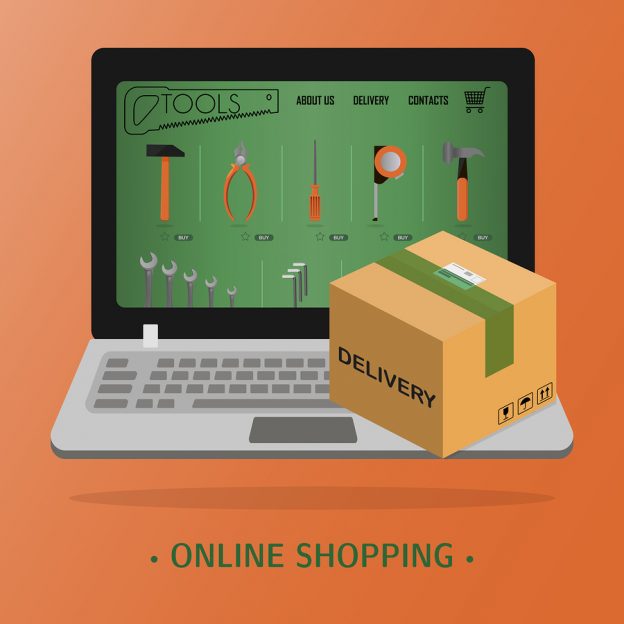
Our clients are often surprised when we tell them they can include online purchases of tools and equipment in their tools tax rebate.
All second hand tools can be included in your mechanics’ or tools tax rebate. But people are hesitant about purchases from sites like Amazon and eBay, or other online auction sites. HMRC’s main stipulation is that you have proof of purchase. If you can prove you bought it and you didn’t get any reimbursement from your boss, then we can include it in your claim for a refund.
But what’s my evidence?
Obviously, you will not get a shop receipt in the traditional, printed from a till manner. But you do have the online trail. HMRC require proof of purchase and that includes receipts received from online companies. Just save them to a digital folder, or go old school and print off a paper copy.
As long as you know where it is, should HMRC decide to look into your tools tax rebate claim. This includes e-money (like PayPal) and credit card transactions. Your bank and credit card statements also form part of your claim’s evidence.
What tools and equipment can I claim for?
HMRC’s definition of tools is deliberately left very loose, so that it can apply equally across all the different industries. For example: a hairdresser’s scissor set, mechanic’s socket set and chef’s set knife set would all be eligible if they meet the rest of the criteria.
In order to claim a tools tax rebate:
- the item must be necessary to do your job.
- you must pay for it yourself and have proof of purchase.
- you do not receive any money from your employer as reimbursement for the item.
It can also include safety equipment like high-vis jackets and steelies, toolboxes (and we know how expensive they are), and software.
Remember, tax rebates aren’t just for self employed taxpayers. The rules apply to PAYE employees too.
Shop safely online
Avoiding scammers selling fake goods is one of the main hurdles for auto mechanics and technicians shopping online. No one wants to waste their hard earned cash on a fake product.
For example, May’s Autotechnician magazine reports on an investigation carried out by Launch Tech UK into dodgy diagnostics being sold online: “On eBay alone, the company has found at least 50 sellers claiming to be genuine diagnostic sellers, but list inaccurate company information such as a UK base and fraudulent VAT numbers.”
And they also found out that it’s not as simple as the sale of outright fakes, products “were of lower specification, inferior quality and masquerading as genuine products.” Unsurprisingly, they are not adhering to tax laws and provide absolutely no transparency, traceability or service to the consumer.
Managing Director of Launch Tech UK, Dave Richards, advises: “If somebody purchases a diagnostic tool over the internet, they must be aware of the product’s origin as support for the tool is essential. Price is a key factor and garages are being targeted by these spurious sellers, who cannot provide any support for the product they are selling.”
As a legitimate company, they are invested in upholding the reputation of their industry, which can only be damaged by the sale of substandard products by dodgy online sellers.
What can I do to avoid being scammed online?
It’s easy to become a bit blasé about online shopping security. When was the last time you ordered something on your phone? Exactly. It’s part of our everyday life now.
Given the current health situation, it’s encouraged as our default position – even for the weekly food shop. If you can get a click and collect or delivery slot, that is. While it may be safer health wise, a quick reminder about actual online safety doesn’t hurt.
TRS top 5 tips for shopping safely online
- Basics: keep your security software up to date, actually create strong passwords and only use secure wif-fi networks. That means not using public wi-fi to make purchases on your phone.
- Whatever site you’re on, use a credit card or PayPal to protect your information and money
- Check out the website’s returns and delivery policies. Have a quick scan of their reviews while you’re there.
- Top tip from the Money Advice Service: “If you’re buying an expensive item, check the manufacturer’s website to make sure you’re using an authorised distributor or seller.”
- Although it’s an extra step, use the two-factor authentication level of security when it’s offered by your bank. It’s an extra couple of seconds to scan your finger print, or type in a texted code. But it keeps your money safe and gives you extra peace of mind.
The most obvious giveaway for a counterfeit product online is the price. The old adage remains true if it seems too good to be true, it probably is.
Now you can enjoy shopping for your next tools online, knowing that you can include them in with your tools tax rebate. Just keep those proofs of purchase somewhere safe.







